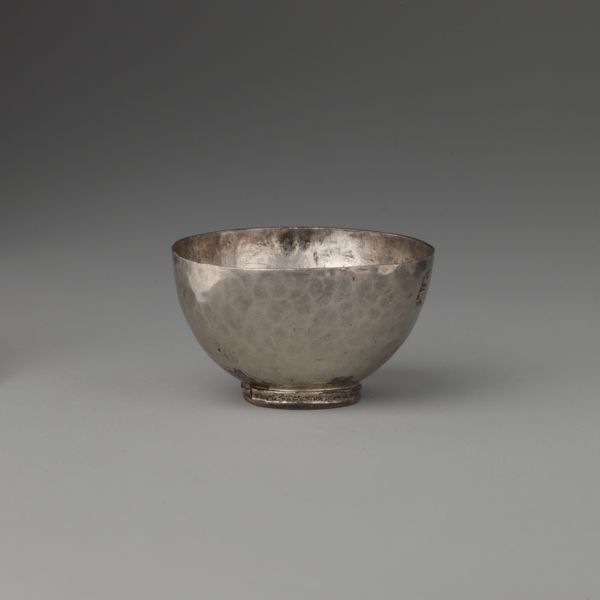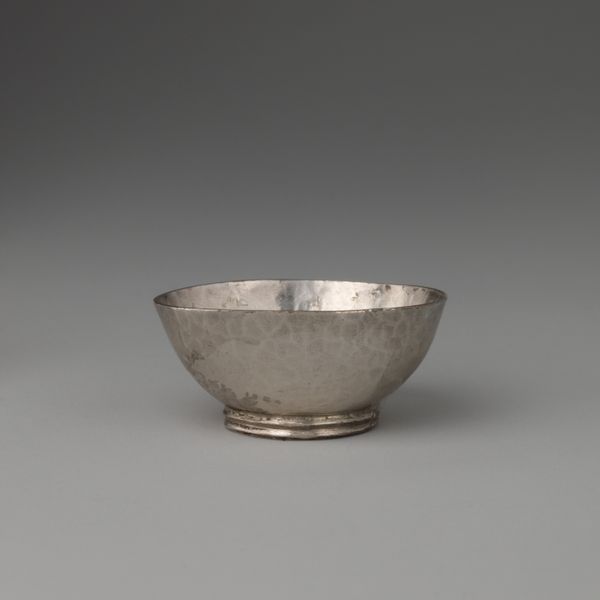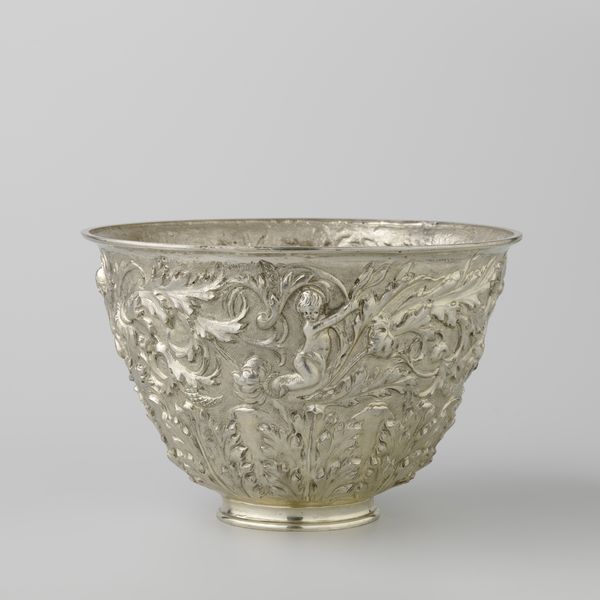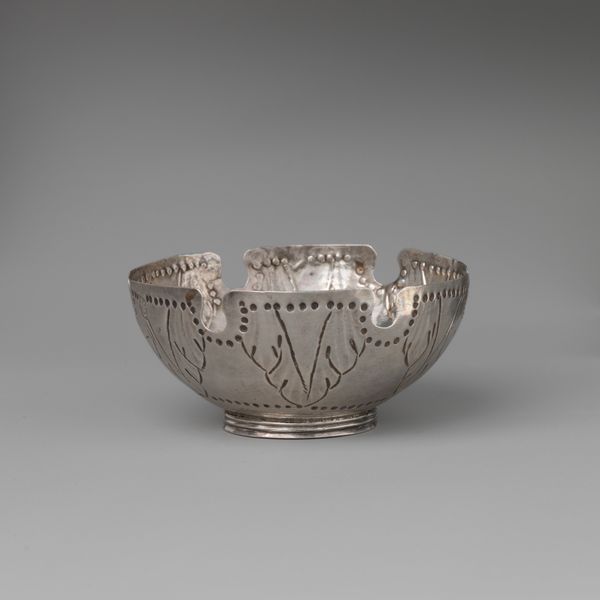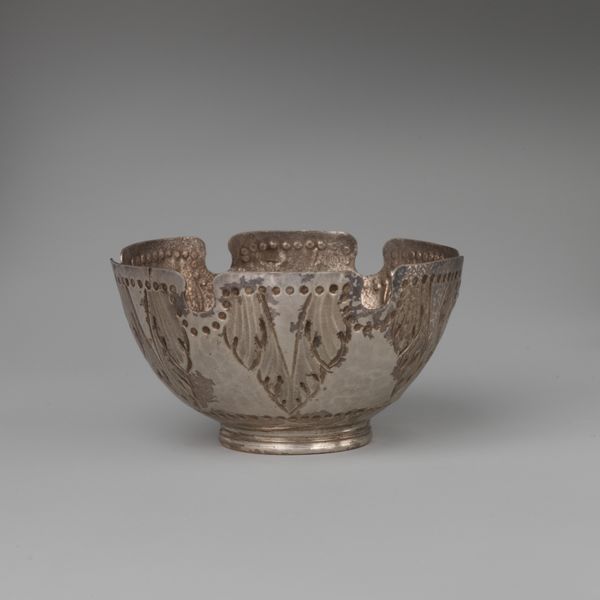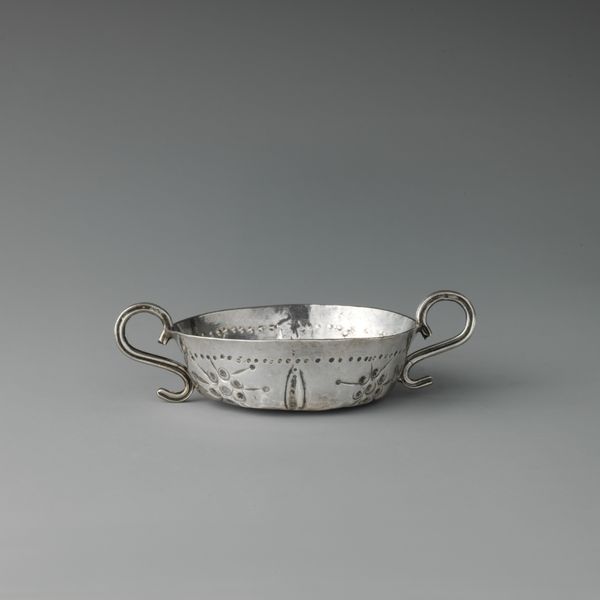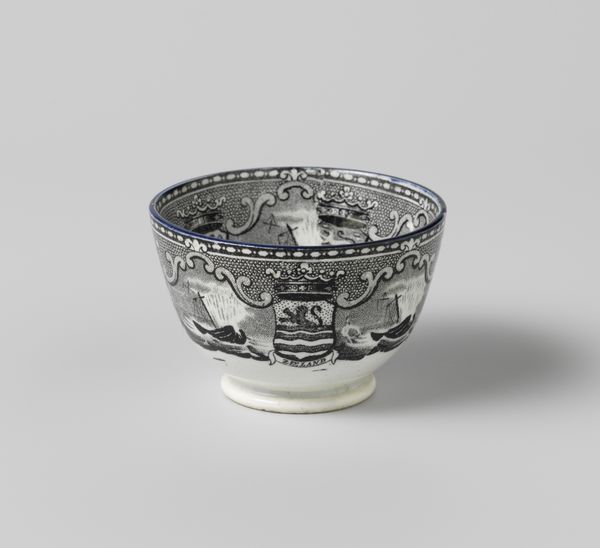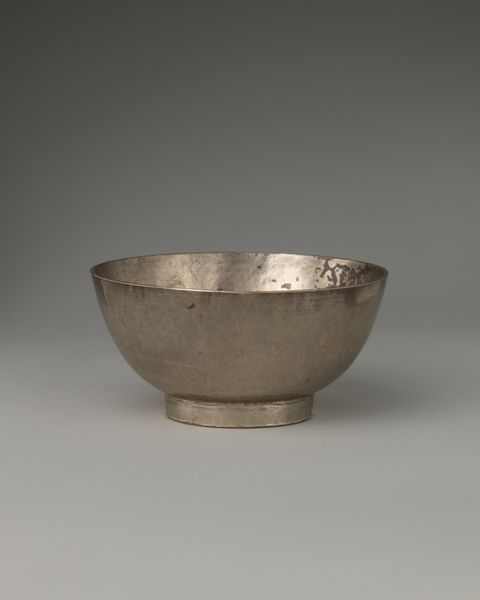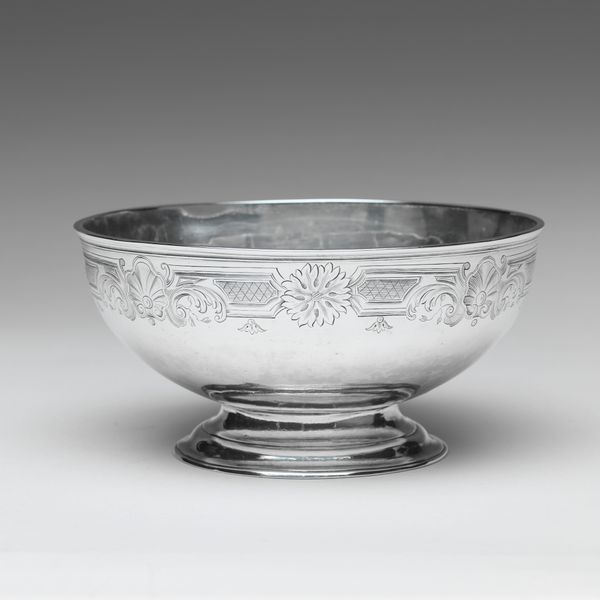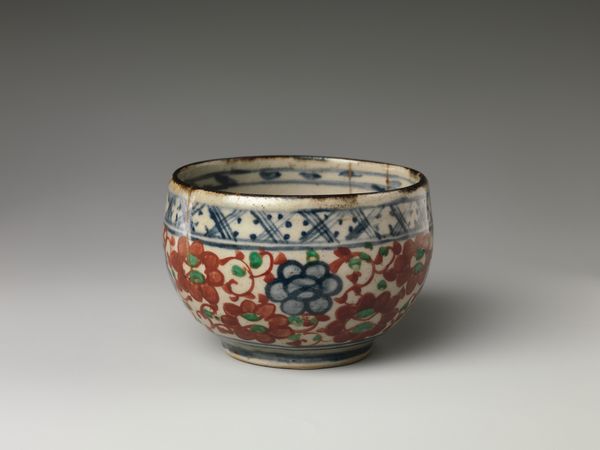
Kop van hardgebakken aardewerk met een bruine transfer als decoratie c. 1831s
0:00
0:00
print, ceramic, earthenware
# print
#
ceramic
#
earthenware
#
stoneware
#
decorative-art
Dimensions: height 4.7 cm, diameter 7.7 cm
Copyright: Rijks Museum: Open Domain
Curator: At first glance, there’s something quite captivating about the intimacy of this object, don’t you think? Editor: Indeed! I'm drawn in by its graphic narrative, the shades of brown against the earthenware feel both modern and antique at the same time. It possesses a certain somber mood; do you know the history of the piece? Curator: We’re looking at a hard-paste earthenware cup dating back to the 1830s. What’s interesting is its method of decoration—a brown transfer print, produced by Southwick Pottery. This was during a time when technological advancements allowed for mass production, opening avenues to explore design beyond strict ornamentation. Editor: Ah, I see. It speaks volumes about shifting societal structures and artistic democratization. I immediately fixated on the repeated images around its form. Ships juxtaposed against heraldic symbols, especially the lion... what significance did those choices hold in their cultural vocabulary? Curator: It could represent maritime trade and nobility intertwined; themes related to identity and perhaps aspirations of upward mobility within 19th-century Britain. I’d imagine there are underlying connotations regarding power and place—who was permitted entry onto the ship? Who does the lion guard and serve? These symbolic visuals aren't simply aesthetic—they carry societal weight, right? Editor: Absolutely. I mean, beyond face value, the nautical themes hint at larger currents of colonialism, with potential narratives about displacement and the acquisition of territory; I'm curious, is there any surviving correspondence to hint about Southwick pottery's intentions when making this piece? Or details about who specifically would buy it and how it would've been displayed? Curator: Unfortunately, evidence of how the item would have been presented or perceived in period isn't easy to locate. We can say for certain, however, that affordable pieces like this, made for rising bourgeois families in the wake of England's Industrial Revolution, shifted dining customs significantly at this point in history. Editor: And the visual symbols are a reflection of those times of disruption and adaptation—the imagery on this piece echoes through cultural history. From personal signifiers to statements about political agency and capital, objects speak. Curator: Precisely. It’s about the layering, the intersectionality of symbols and circumstances. We look to deconstruct inherited narratives. Editor: It transforms something as seemingly simple as a humble drinking vessel into a point of deep engagement. A story quietly told through time.
Comments
No comments
Be the first to comment and join the conversation on the ultimate creative platform.
